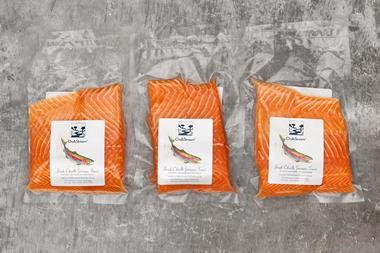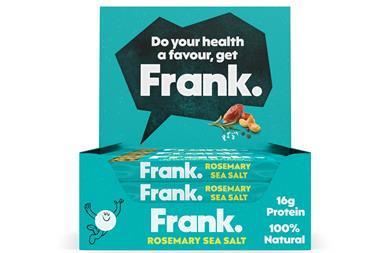The colour-coded system grabbed the headlines last week, but it wasn’t the only aspect of labelling MEPs cast their eyes over, writes Nick Hughes
The European Parliament's decision to give colour-coded nutritional labelling the red light caused a furore last week.
But the move to omit traffic-light labelling from draft EU legislation on food information is just one of a glut of new proposals that have been described as a "slap in the face" by one critic.
Perhaps most contentious is the support MEPs have given to nutritional values being presented in terms of weight rather than per portion.
Under the proposals, quantities of fat, saturates, sugar and salt must be expressed per 100g or 100ml on packaging.
While broadly in line with the GDA model adopted by Tesco and Nestlé, this has proved controversial.
Critics claim the use of a 100g measure as a basis for comparison as with traffic lights unfairly represents the nutritional profile of foods designed to be eaten in much smaller or larger quantities.
"Providing information per portion is very important, especially if you have a single-portion package," says Barbara Gallani, director of food safety and science at the Food and Drink Federation. "Allowing GDAs to be provided per portion would make much more sense for consumers."
EU policymakers also want details of trans fats to be included on packaging, a demand the FDF says is unnecessary.
"We don't believe there is a need to label trans fats," says Gallani, pointing to National Diet and Nutrition Survey data that shows the average energy intake from trans fats in the UK is just 0.8%, against a WHO recommendation that it should not exceed 2%.
"We should try and remember that the aim of the legislation was to simplify information rather than make it more cumbersome," she adds. "Labelling the majority of products as having zero trans fats wouldn't be of much help."
A proposal to extend country-of-origin labelling to all meat, poultry, dairy goods and other single-ingredient products has further polarised opinion. Dairy farmers have welcomed the move, subject to an impact assessment, but small food and drink manufacturers fear it would land them with crippling administrative burdens.
"Labelling is there to make sure the consumer can make an informed choice and remove ambiguity," says Richard Hollingdale, sales and marketing director for farmer co-operative First Milk.
"We would like to see all cheese packs with clear labelling stating the country of origin where the milk is converted into cheese (curds)."
But the plan to impose country-of-origin labelling on meat, poultry and fish when used as an ingredient in processed food has been less enthusiastically greeted.
"This is a slap in our face and will trigger enormous complications for small businesses changing ingredients frequently," says Ludger Fischer, food policy adviser for European craft and SME employers' organisation UEAPME.
Another contentious move overshadowed by the traffic-light row is the decision by MEPs by a single vote to reinstate nutrient profiles. The vote follows the Environment Committee's recommendation in March that they be removed from existing EU nutrition and health claims legislation.
The decision will upset many manufacturers who have accused the FSA's system of unfairly penalising dairy products in particular. "If the nutrient profiles are set incorrectly, it will be difficult to make a good-tasting product and the consumer won't buy it," says Hollingdale.
The complete draft legislation will now be put forward for review by the European Council.
Key proposals
- Quantities of fat, saturates, sugar and salt as well as energy must be shown on front of food packs per 100g or 100ml
- Details of protein, fibres and trans fats to be included elsewhere on packaging
- Country-of-origin labelling should be extended to all meat, poultry, dairy products and other single-ingredient products and for meat, poultry and fish when used as an ingredient in processed food
- Meat labels should indicate where animal was born, reared and slaughtered
- Food that is not prepacked, such as meat from a butcher, to be exempt from nutrition labelling legislation
The European Parliament's decision to give colour-coded nutritional labelling the red light caused a furore last week.
But the move to omit traffic-light labelling from draft EU legislation on food information is just one of a glut of new proposals that have been described as a "slap in the face" by one critic.
Perhaps most contentious is the support MEPs have given to nutritional values being presented in terms of weight rather than per portion.
Under the proposals, quantities of fat, saturates, sugar and salt must be expressed per 100g or 100ml on packaging.
While broadly in line with the GDA model adopted by Tesco and Nestlé, this has proved controversial.
Critics claim the use of a 100g measure as a basis for comparison as with traffic lights unfairly represents the nutritional profile of foods designed to be eaten in much smaller or larger quantities.
"Providing information per portion is very important, especially if you have a single-portion package," says Barbara Gallani, director of food safety and science at the Food and Drink Federation. "Allowing GDAs to be provided per portion would make much more sense for consumers."
EU policymakers also want details of trans fats to be included on packaging, a demand the FDF says is unnecessary.
"We don't believe there is a need to label trans fats," says Gallani, pointing to National Diet and Nutrition Survey data that shows the average energy intake from trans fats in the UK is just 0.8%, against a WHO recommendation that it should not exceed 2%.
"We should try and remember that the aim of the legislation was to simplify information rather than make it more cumbersome," she adds. "Labelling the majority of products as having zero trans fats wouldn't be of much help."
A proposal to extend country-of-origin labelling to all meat, poultry, dairy goods and other single-ingredient products has further polarised opinion. Dairy farmers have welcomed the move, subject to an impact assessment, but small food and drink manufacturers fear it would land them with crippling administrative burdens.
"Labelling is there to make sure the consumer can make an informed choice and remove ambiguity," says Richard Hollingdale, sales and marketing director for farmer co-operative First Milk.
"We would like to see all cheese packs with clear labelling stating the country of origin where the milk is converted into cheese (curds)."
But the plan to impose country-of-origin labelling on meat, poultry and fish when used as an ingredient in processed food has been less enthusiastically greeted.
"This is a slap in our face and will trigger enormous complications for small businesses changing ingredients frequently," says Ludger Fischer, food policy adviser for European craft and SME employers' organisation UEAPME.
Another contentious move overshadowed by the traffic-light row is the decision by MEPs by a single vote to reinstate nutrient profiles. The vote follows the Environment Committee's recommendation in March that they be removed from existing EU nutrition and health claims legislation.
The decision will upset many manufacturers who have accused the FSA's system of unfairly penalising dairy products in particular. "If the nutrient profiles are set incorrectly, it will be difficult to make a good-tasting product and the consumer won't buy it," says Hollingdale.
The complete draft legislation will now be put forward for review by the European Council.
Key proposals
- Quantities of fat, saturates, sugar and salt as well as energy must be shown on front of food packs per 100g or 100ml
- Details of protein, fibres and trans fats to be included elsewhere on packaging
- Country-of-origin labelling should be extended to all meat, poultry, dairy products and other single-ingredient products and for meat, poultry and fish when used as an ingredient in processed food
- Meat labels should indicate where animal was born, reared and slaughtered
- Food that is not prepacked, such as meat from a butcher, to be exempt from nutrition labelling legislation














No comments yet